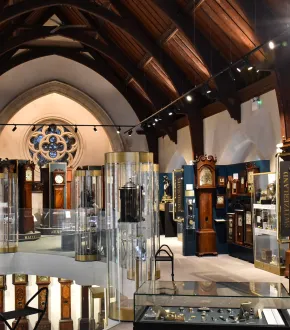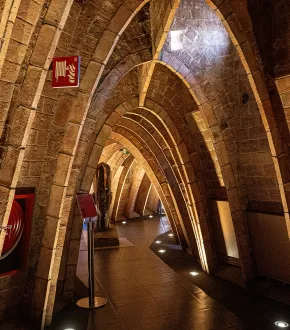9.5 °c Wind speed: 26 km/h Precipitation: 7 % Cloudiness: 42 % Humidity: 81 mm Pressure: 7 mb
Hook Lighthouse
WX
Ireland
Description
Standing strong against the wild Atlantic winds and the non-stop power of the sea, right at the end of the Hook Peninsula near Fethard-on-Sea in County Wexford, that's Hook Lighthouse. This isn't just any old lighthouse; it proudly reckons it's the world's oldest working lighthouse. It's a guiding light whose beam still helps ships through dangerous waters today, just like some kind of light has done here for maybe 1500 years! Its story is a great mix of old tales, medieval building skills, people working hard for centuries, and modern shipping. To step into history here is to connect with a long, long line of keeping sailors safe, connecting old stories with today's shipping, and lighting up the way for so many generations. Get ready to be grabbed by the special feeling of Hook Lighthouse—a lasting story of toughness and wonder.
Monks and Their Bonfires: The Very First Light
The old stories about a light on Hook Head go way back to the 5th century! Legend says a Welsh monk, St. Dubhán, set up the first light here. Probably just a big bonfire tended by him and his monk mates, trying to warn sailors about the nasty rocks and guide them into Waterford Harbour. Just imagine those early monks, living a simple life of prayer and hard work, carefully keeping a fire burning against the awful weather—a really kind act when sailing was so dodgy. These hints of history show that people have been trying to make this dangerous spot safer for sailors for a very, very long time.
William Marshal's Big Tower: Built to Last!
The amazing stone tower we see today came along in the early 1200s. The bloke who had it built was William Marshal, Earl of Pembroke—they called him 'the greatest knight that ever lived.' He was a powerful Norman lord and knew that safe shipping was key for trade and strengthening his power in Ireland. Waterford Harbour was super important, so he ordered this tough tower to be built. They built it with unbelievably thick limestone walls (like 4 metres thick at the bottom!). This tower was made to last—a real wonder of medieval building. It was built to work, not look fancy, strong enough to hold a massive beacon at the top, which was probably a huge coal fire to start with. And that very same tower, amazingly, is still the main part of the lighthouse today, 800 years on! Good for keeping the wind out, too!
Keeping the Light Shining: The Keepers' Long Watch
For nearly 800 years, from when it was built right up until fairly recently, Hook Lighthouse had a long line of dedicated lighthouse keepers looking after it. Their lives must have been a huge job, often really cut off from everyone, especially during massive winter storms when the Hook Peninsula could be completely stranded. No popping to the shops for them! Picture them carefully looking after the light, from those early coal fires, to whale oil lamps, then fancier paraffin lamps, and eventually electric lights. They had to keep the lantern glass spotless, fix the machinery, and keep a watchful eye on the sea, day in, day out. Their tales, mostly unwritten but part of the lighthouse's history, are all about dedication, guts, and just getting on with a tough, important job.
"By Hook or by Crook": A Bit of Local Legend
The mystery of Hook Head also gets a boost from local stories, including that famous saying, "By Hook or by Crook." One popular story links it to Oliver Cromwell back in the 1600s. The tale goes that Cromwell said he'd take Waterford "by Hook (meaning Hook Head) or by Crooke" (a village on the other side of the harbour)—basically, "I'm getting in one way or another, lads!" Whether it's true or not, it's a good story and adds another layer to the old tales around this famous landmark.
Going Automatic: A New Era
The 1900s brought more changes, with the light getting electrified and improved. But the biggest change happened in March 1996 when Hook Lighthouse went fully automatic, and the last resident keepers left—a bit of a sad moment, really, after all those centuries. But going automatic didn't mean the end for Hook! Instead, it kicked off a new chapter. Because it's such an amazing historic place, it was opened up for visitors, looked after by a local group with the support of the Commissioners of Irish Lights.
So today, when you step into history at Hook Lighthouse, it's a brilliant experience. Guided tours take you up the 115 worn-out spiral steps of that medieval tower, through rooms where keepers lived and worked. Every stone has a story. You can learn about how the lights changed over the years, see displays about the keepers' lives, and hear more about the area's sea history. Getting to the lantern room at the top and stepping onto the balcony gives you amazing all-around views of the coast and the often rough waters where the "Three Sisters" rivers meet the sea. It's up there, feeling the wind and seeing the huge ocean, that you get how important this guiding light has been, and still is, for today's shipping.
Still Shining, Still Guiding
Hook Lighthouse perfectly connects old stories with today's shipping. That tough old medieval tower is still standing strong, but inside its lantern, it houses a modern, powerful, automatic light that carries on the old job of lighting up the way for generations of sailors. It’s a timeless guiding light showing toughness, having survived centuries of storms and changes, and wonder. It grabs everyone with its incredible age, dramatic setting, and the amazing human stories it holds.
A Lighthouse Legend That Lasts
Its legacy has many sides: it's an amazing piece of medieval building, a vital part of Ireland's sea heritage, proof of centuries of hard work by the lighthouse keepers, and now a much-loved visitor spot. The special feeling of Hook Lighthouse stays with you long after you've climbed down those old steps. It's a feeling of connecting with something truly lasting, a real respect for the power of the sea, and for the human cleverness and dedication that tried to make it safer. It's a place where the past does speak volumes; it's a constant, reassuring sight on a wild and beautiful coast, leaving something you won't forget on everyone who experiences its simple beauty.






Comments